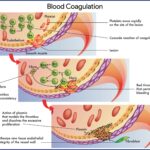Diagnosis of tetanus is primarily clinical, relying heavily on a thorough physical examination, the patient’s medical history, and a detailed account of their vaccination status. While laboratory tests play a less direct role in confirming tetanus itself, they are crucial in differential diagnosis and supporting clinical findings.
Clinical Evaluation as the Cornerstone of Tetanus Diagnosis
Doctors initially diagnose tetanus based on clinical assessment. This involves:
- Physical Exam: Observing for telltale signs of tetanus, such as muscle spasms (particularly trismus or lockjaw, and risus sardonicus, a characteristic sardonic smile), muscle rigidity, and generalized pain. The examination will assess the extent and severity of muscle involvement.
- Medical History: Gathering information about any recent injuries, particularly puncture wounds, cuts, burns, or animal bites, which are common entry points for Clostridium tetani spores.
- Vaccination History: Determining the patient’s tetanus vaccination status. A complete vaccination history significantly reduces the likelihood of tetanus, but lack of vaccination or incomplete series increases suspicion.
The Role of Tetanus Lab Diagnosis
While clinical presentation is paramount, laboratory investigations can be employed to:
- Rule out other conditions: Tetanus symptoms can mimic other conditions like strychnine poisoning, hypocalcemic tetany, meningitis, and dystonic reactions to certain medications. Lab tests can help exclude these possibilities. For instance, blood tests can assess electrolyte levels to rule out hypocalcemia, while cerebrospinal fluid analysis can help diagnose meningitis.
- Identify Clostridium tetani (Less Common in Routine Diagnosis): In research settings or specific clinical scenarios, attempts may be made to isolate Clostridium tetani from wound samples. However, this is not a routine diagnostic procedure for several reasons:
- C. tetani is often present in small numbers in wounds, and may not be easily cultured even in confirmed tetanus cases.
- The bacteria produce the toxin locally in the wound, and the systemic effects are toxin-mediated, not directly due to bacterial proliferation in the body.
- Treatment decisions must be made rapidly based on clinical signs, and waiting for culture results would delay critical intervention.
- Toxin Detection (Research and Specialized Labs): Highly specialized laboratories with research capabilities might employ assays to detect tetanus toxin (tetanospasmin) in wound exudates or tissue samples. These tests are not widely available for routine clinical diagnosis and are primarily used for research purposes or in epidemiological studies. Examples include:
- Animal bioassay: Historically, the most definitive test was injecting wound exudate into laboratory animals and observing for tetanus symptoms. This method is time-consuming, ethically concerning, and not practical for routine diagnosis.
- Immunological assays: More modern approaches may involve immunological methods like ELISA (enzyme-linked immunosorbent assay) or PCR (polymerase chain reaction) to detect the toxin or bacterial DNA. These are more sensitive and rapid but still not standard diagnostic tools.
Why Lab Tests Are Not the Primary Diagnostic Tool
The diagnosis of tetanus remains primarily clinical because:
- Time Sensitivity: Tetanus is a medical emergency requiring immediate treatment. Waiting for lab confirmation would significantly delay life-saving interventions like tetanus antitoxin administration and supportive care.
- Clinical Specificity: The classic signs and symptoms of tetanus are often highly specific, especially in patients with a suggestive history of injury and inadequate vaccination.
- Limited Sensitivity of Lab Tests: As mentioned, culturing C. tetani or detecting the toxin is not consistently reliable, and a negative lab result does not rule out tetanus if clinical signs are present.
Treatment and Management Following Diagnosis
Regardless of lab confirmation, a clinical diagnosis of tetanus necessitates immediate and comprehensive treatment, typically in an intensive care unit. Treatment strategies include:
Wound Care
Thorough cleaning of the wound is crucial to remove any debris, foreign material, and devitalized tissue that could harbor C. tetani.
Medications
- Tetanus Antitoxin: This is the cornerstone of tetanus treatment. Human tetanus immunoglobulin (TIG) is administered to neutralize unbound tetanus toxin circulating in the body. It does not neutralize toxin already bound to nerve tissue, highlighting the importance of early administration.
- Sedatives and Muscle Relaxants: Drugs like benzodiazepines and neuromuscular blocking agents are used to manage muscle spasms and rigidity.
- Antibiotics: While antibiotics do not directly address the toxin, they may help eliminate C. tetani bacteria in the wound and prevent further toxin production. Metronidazole or penicillin are commonly used.
- Vaccination: Tetanus vaccination is initiated or boosted as part of the treatment to stimulate active immunity against future tetanus infections.
Supportive Therapies
Supportive care is vital to manage the complications of tetanus:
- Airway Management: Maintaining a clear airway and providing respiratory support, including mechanical ventilation if necessary, is critical due to respiratory muscle spasms.
- Nutritional Support: Feeding tubes may be required to provide adequate nutrition, especially if muscle spasms interfere with oral intake.
- Quiet Environment: Minimizing external stimuli like noise and light can help reduce spasm triggers.
Prevention is Key
Given the severity of tetanus and the limitations of lab diagnosis in routine settings, prevention through vaccination and proper wound care remains the most effective strategy. Maintaining up-to-date tetanus vaccination and practicing thorough wound cleaning for any injury are essential for minimizing the risk of this potentially fatal disease. Consult a healthcare professional promptly for puncture wounds, deep cuts, animal bites, or wounds contaminated with soil or debris, and if unsure about your tetanus vaccination status.
